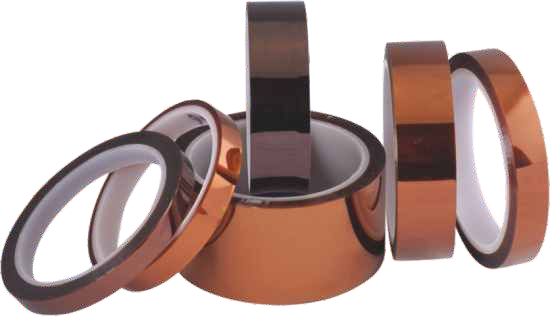How to use high-temperature adhesive tape?
18-03-26

### How to Use High-Temperature Tape?
High-temperature tape, as a special functional material, plays an important role in industrial manufacturing, electronics, automotive manufacturing, aerospace, and many other fields. Its main characteristic is that it can maintain stable performance under high-temperature environments and is not easy to melt, deform, or lose its viscosity. This article will detail the usage of high-temperature tape to help readers better understand and apply this product.
#### 1. Understanding the Types and Characteristics of High-Temperature Tape
There are many types of high-temperature tapes. According to the base material, they can be divided into polyimide tapes, fiberglass tapes, PET (polyester) tapes, etc.; according to function, they can be divided into insulation tapes, masking tapes, and protective tapes, etc. Different types of high-temperature tapes have different high-temperature resistance ranges, ranging from 150℃ to 1000℃. When choosing, you need to determine it based on the specific application scenario.
- **Polyimide tape**: Usually withstands temperatures up to 300℃, with good electrical insulation and chemical corrosion resistance.
- **Fiberglass tape**: High-temperature resistance can reach above 500℃, high strength, often used for sealing and fixing in high-temperature environments.
- **PET tape**: The general temperature resistance range is between 150℃ and 200℃, with good weather resistance and tear strength.
#### 2. Preparation
Before using high-temperature tape, the following preparations are needed:
1. **Clean the surface**: Ensure that the surface to be bonded is clean, dry, free of oil, dust, or moisture. If necessary, wipe it clean with solvents such as alcohol or acetone, and let it dry completely before bonding.
2. **Measure the size**: According to the actual needs, accurately measure the required length and width of the tape with a ruler or tape measure to avoid waste.
3. **Choose a suitable environment**: Try to operate at room temperature and avoid using it in extremely cold or humid environments to avoid affecting the tape's viscosity.
#### 3. Correctly Applying High-Temperature Tape
1. **Cut the tape**: Use scissors or a utility knife to cut the tape along the measured size. Ensure that the cut is even and avoid the edges curling up.
2. **Apply step by step**: Starting from one end, slowly lay the tape flat on the prepared surface, and gently press it with your fingers or a scraper to remove air bubbles and ensure that the tape is tightly bonded to the surface. For large-area bonding, it is recommended to do it in sections to avoid misalignment.
3. **Special treatment**: For occasions requiring higher adhesion, you can lightly sand the back of the tape or the bonding surface before bonding to increase the contact area and improve the bonding effect.
4. **Edge treatment**: For the edges, you can gently heat them with a hot air gun (moderate temperature, avoid overheating) to make the edges of the tape bond better and reduce curling.
#### 4. Application Examples
- **Electronic component fixing**: During circuit board assembly, use high-temperature tape to fix resistors, capacitors, and other components to prevent vibration from causing them to fall off, while maintaining electrical insulation.
- **High-temperature sealing**: In high-temperature environments such as car engine compartments, ovens, and industrial furnaces, use high-temperature tape to seal gaps to prevent heat leakage or the leakage of harmful gases.
- **Spray painting masking**: When performing spray painting operations, use high-temperature tape to mask areas that do not need to be sprayed to protect surrounding parts from paint contamination.
#### 5. Maintenance and Precautions
- **Regular inspection**: Tapes used in high-temperature environments for a long time should be inspected regularly. If there are signs of peeling or aging, they should be replaced in time.
- **Storage conditions**: Unused high-temperature tape should be stored in a dry, cool place, avoiding direct sunlight and high-temperature environments to maintain its performance.
- **Safe operation**: When handling high-temperature objects, wear personal protective equipment such as protective gloves and glasses to prevent burns.
#### 6. Conclusion
High-temperature tape, with its unique properties, plays an irreplaceable role in many industrial fields. Correct use of high-temperature tape not only improves work efficiency but also ensures production safety. By understanding the types and characteristics of the tape, doing the necessary preparation, mastering the correct bonding method, and paying attention to later maintenance and inspection, the role of high-temperature tape can be maximized to meet the needs of various complex working conditions. It is hoped that this introduction will help readers better apply high-temperature tape and improve work quality and efficiency.
Previous:
Next:

+86 0769-82302850
+86 189 8872 0555
No.50 Shengye Road, Huangjiang Town,
Dongguan City, Guangdong Province
Request a Quote
Get Price and Free Sample Now!





